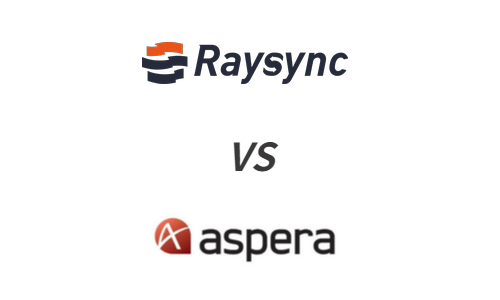How Raysync Simulates Transmission Tests in Packet Loss Situations
In today's highly network-dependent information society, the stability and efficiency of network communication are crucial for data transmission. However, packet loss, a common phenomenon in network communication, often causes serious impacts on the integrity and efficiency of data transmission. This article aims to explore how to evaluate and optimize the efficiency and stability of the file transfer software - Raysync through simulation testing in a packet loss network environment.
Part One: Tools and Methods for Simulating Packet Loss Environment
1. Netem network simulation tool and tc traffic control tool
Before simulating packet loss, we need to understand two important tools: netem and tc. Netem is a module in the Linux kernel that allows users to simulate various network conditions, including bandwidth, delay, packet loss, etc. tc (Traffic Control), on the other hand, is a tool in the Linux system for controlling network traffic, which is implemented by netem for network condition simulation.
2. Specific operations for packet loss simulation using tc
In the Linux system, we can simulate packet loss situations via the tc command-line tool. Here are some common tc commands:
-
tc qdisc add dev ens3 root netem loss 10%: This command sets a packet loss rate on a network interface named ens3, causing 10% of the packets to be lost during transmission.
-
tc qdisc add dev ens3 root netem loss 10% 40%: This command not only sets a 10% packet loss rate but also specifies a success rate of 40%, meaning that there is a 40% chance of successfully executing the packet loss operation when attempting to drop packets.
-
tc qdisc add dev ens3 root netem duplicate 1%: This command causes 1% of packets to be duplicated during transmission, simulating damaged packets.
-
tc qdisc show dev ens3: With this command, we can view all current traffic control rules set on the ens3 network card to confirm whether the packet loss setting is successful.
-
tc qdisc del dev ens3 root netem loss 10%: If you need to change the packet loss rate, you need to first remove the old rule and then reset the new rule.
3. Clumsy tool in Windows system
For Windows users, clumsy is a simple and easy-to-use network simulation tool. Users can choose desired network conditions to simulate, such as packet loss and delay, via its GUI. Once clumsy is started, users just need to click the start button to begin the simulation. If a green dot appears in front of the corresponding indicator on the interface, it means the interception measure is in effect. Clicking the stop button will end the simulation.
Part Two: Raysync's File Transfer Test Strategy in Packet Loss Environment
1. Preparations before testing
Before starting the test, we need to ensure the stability of the network environment and close all other network applications that might affect the test results. Furthermore, to obtain more accurate results, we need to choose appropriate test files, which should be of different sizes and types, to simulate realistic file transfer scenarios.
2. Key points during the testing process
-
Multi-stage testing: Testing should be carried out in stages, starting from low packet loss rates and gradually increasing packet loss rates to comprehensively evaluate the performance of Raysync under different network conditions.
-
Uploading and downloading tests: When testing file uploading and downloading, the receiver should be set as the packet loss side. For example, if we test file uploading, packet loss should be set on the server side, and vice versa.
-
Performance evaluation: After each stage of testing, key performance indicators such as transfer speed, success rate, and packet loss rate should be recorded for subsequent analysis and comparison.
Part Three: Analysis of Test Results and Suggestions for Optimization
By testing Raysync's file transfer performance under different packet loss rates, we can obtain valuable data that helps us understand the software's performance in adverse network conditions. Based on the test results, we can make the following optimization suggestions:
-
Enhancing error recovery mechanisms: The software should have strong error recovery capabilities, being able to quickly recover transmission after packet loss to minimize the impact on overall transmission efficiency.
-
Dynamically adjusting transfer strategy: Transfer strategy should be dynamically adjusted according to network conditions, for example, automatically reducing the transmission speed when high packet loss rates are detected to enhance the stability of transmission.
-
Multi-path transmission: Consider using multi-path transmission technologies, splitting the file into several parts and transmitting them simultaneously via different network paths, thereby improving the reliability of the transmission.
Conclusion
Although packet loss is unavoidable, we can find effective ways to improve file transfer efficiency and stability through simulation tests and performance analysis. Test results of Raysync under packet loss conditions show that by optimizing software design and transfer strategy, the software's performance under adverse network conditions can be significantly improved. Therefore, for developers of network communication software, in-depth research and resolution of the packet loss issue would help to enhance user experience and achieve more efficient, more reliable data transfer.
You might also like

Raysync News
March 7, 2024How to solve the problem of enterprise udp transfer not working
UDP plays an important role in real-time communication and large-scale data transfer. However, the connectionless and unreliable nature of UDP also poses challenges for data transmission. This article focuses on the solution for udp transmission failure.

Raysync News
January 5, 2024How to Solve the Challenges of Modernizing Healthcare Data Transfer?
Facing major challenges in the healthcare sector, RaySync is empowering the modern and rapid development of data transfer in the healthcare industry.

Raysync News
May 18, 2020What are the best alternatives to Aspera in 2024?
With ultra-high transfer rates and high bandwidth utilization, Raysync is an efficient alternative to aspera. See this article.